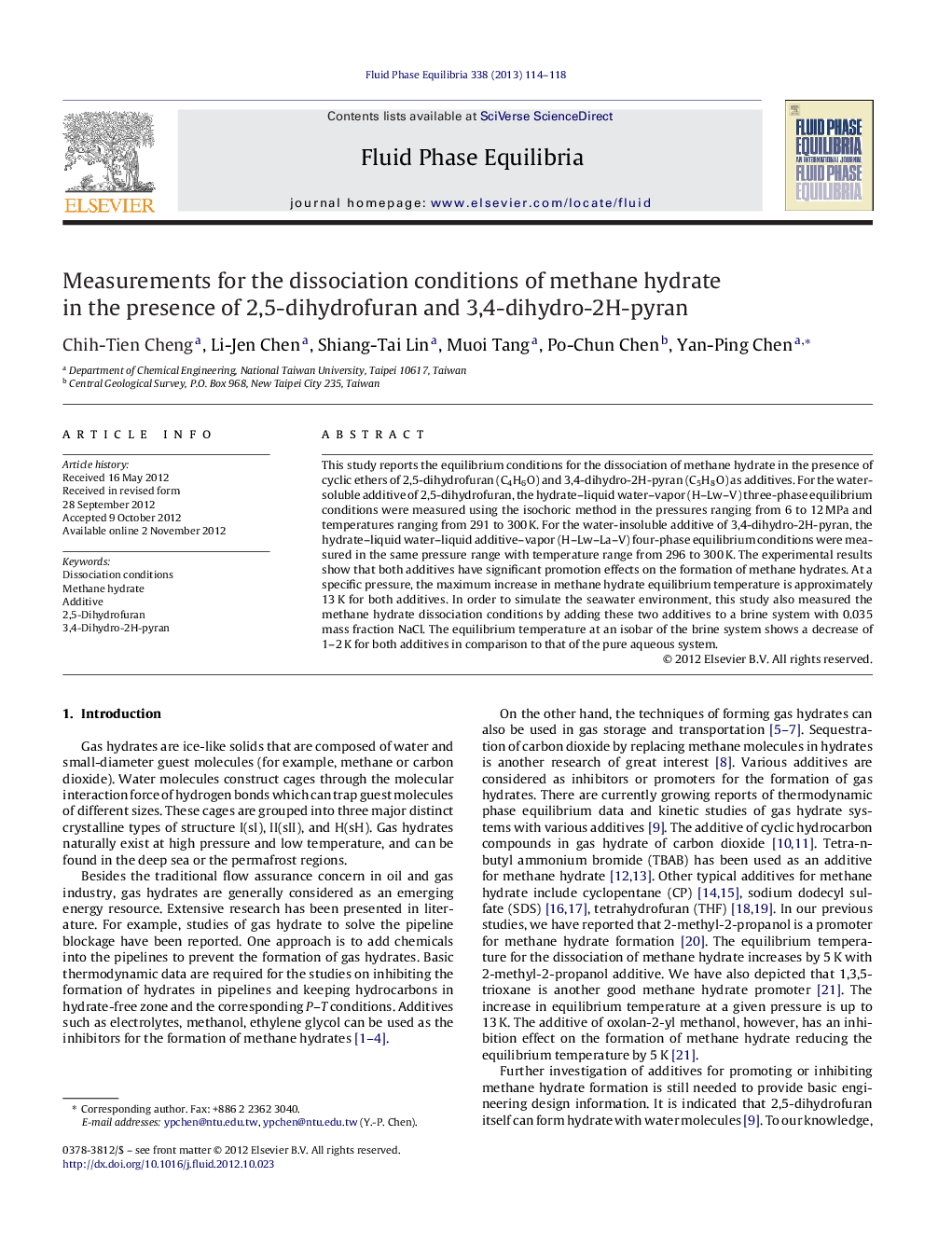| Article ID | Journal | Published Year | Pages | File Type |
|---|---|---|---|---|
| 201847 | Fluid Phase Equilibria | 2013 | 5 Pages |
This study reports the equilibrium conditions for the dissociation of methane hydrate in the presence of cyclic ethers of 2,5-dihydrofuran (C4H6O) and 3,4-dihydro-2H-pyran (C5H8O) as additives. For the water-soluble additive of 2,5-dihydrofuran, the hydrate–liquid water–vapor (H–Lw–V) three-phase equilibrium conditions were measured using the isochoric method in the pressures ranging from 6 to 12 MPa and temperatures ranging from 291 to 300 K. For the water-insoluble additive of 3,4-dihydro-2H-pyran, the hydrate–liquid water–liquid additive–vapor (H–Lw–La–V) four-phase equilibrium conditions were measured in the same pressure range with temperature range from 296 to 300 K. The experimental results show that both additives have significant promotion effects on the formation of methane hydrates. At a specific pressure, the maximum increase in methane hydrate equilibrium temperature is approximately 13 K for both additives. In order to simulate the seawater environment, this study also measured the methane hydrate dissociation conditions by adding these two additives to a brine system with 0.035 mass fraction NaCl. The equilibrium temperature at an isobar of the brine system shows a decrease of 1–2 K for both additives in comparison to that of the pure aqueous system.
Graphical abstractMethane hydrate dissociation conditions in pure water with various concentrations of 2,5-dihydrofuran additive (■, without additive; ★, 0.025 mass fraction; ▴, 0.05 mass fraction; , 0.10 mass fraction; ▿, 0.15 mass fraction).Figure optionsDownload full-size imageDownload as PowerPoint slideHighlights► New dissociation data of methane hydrate with additives are presented. ► Two additives investigated are 2,5-dihydrofuran and 3,4-dihydro-2H-pyran. ► Both additives show promotion effect for methane hydrate formation. ► The maximum promotion effect is 13 K at an isobar for both additives. ► New dissociation condition data are also measured for brine systems.
